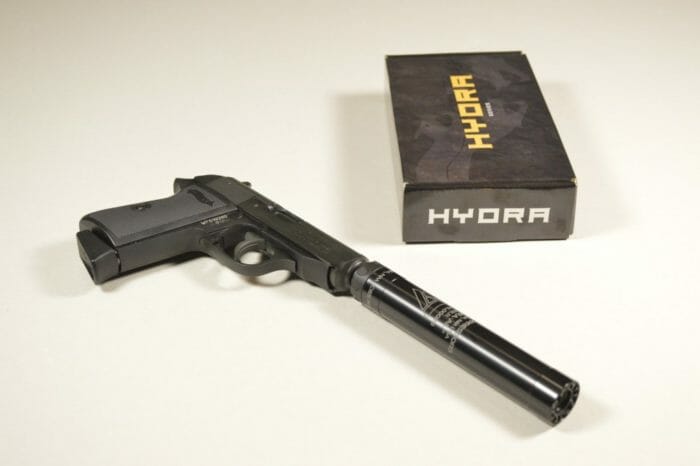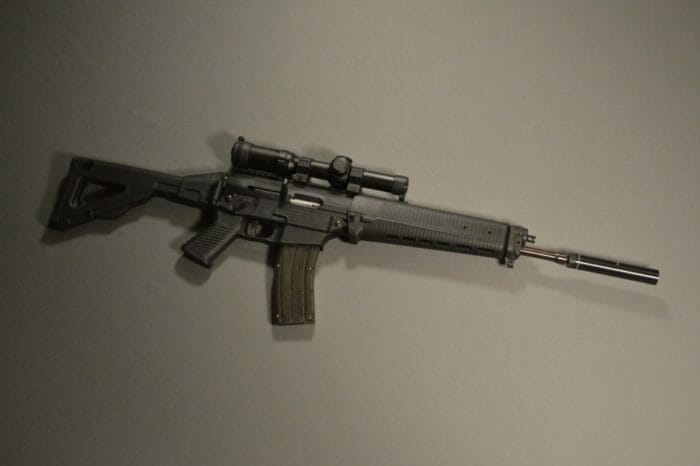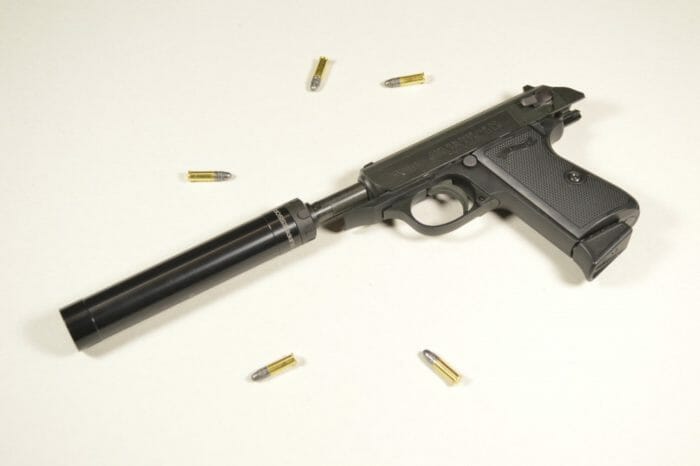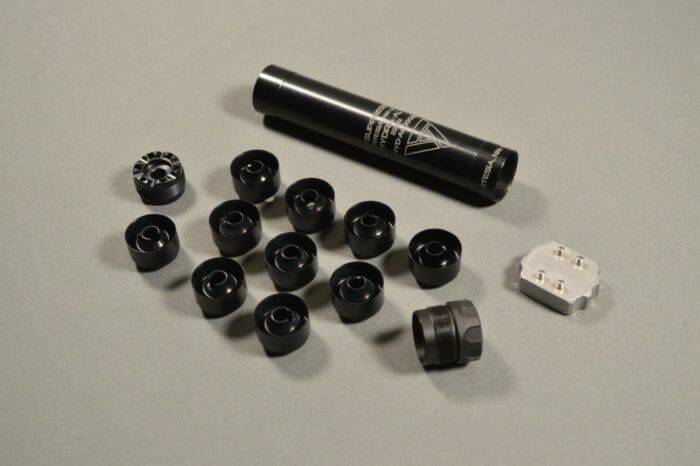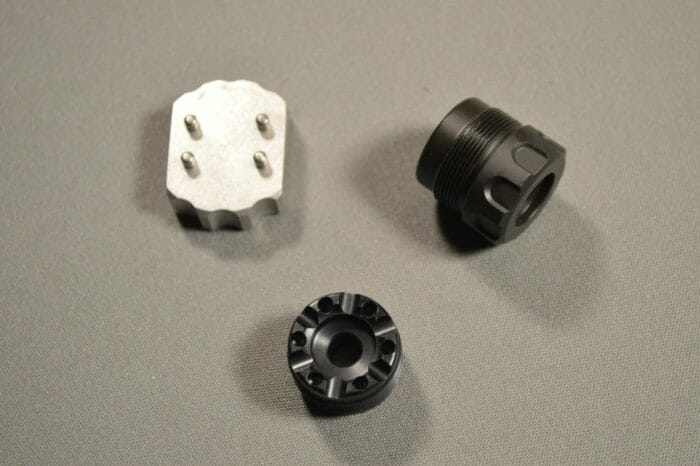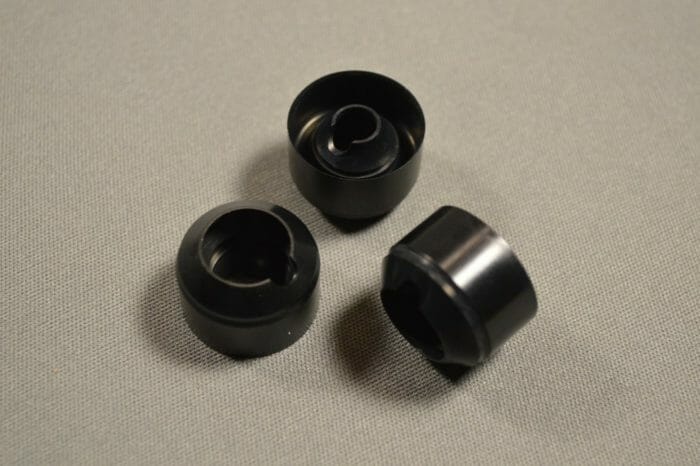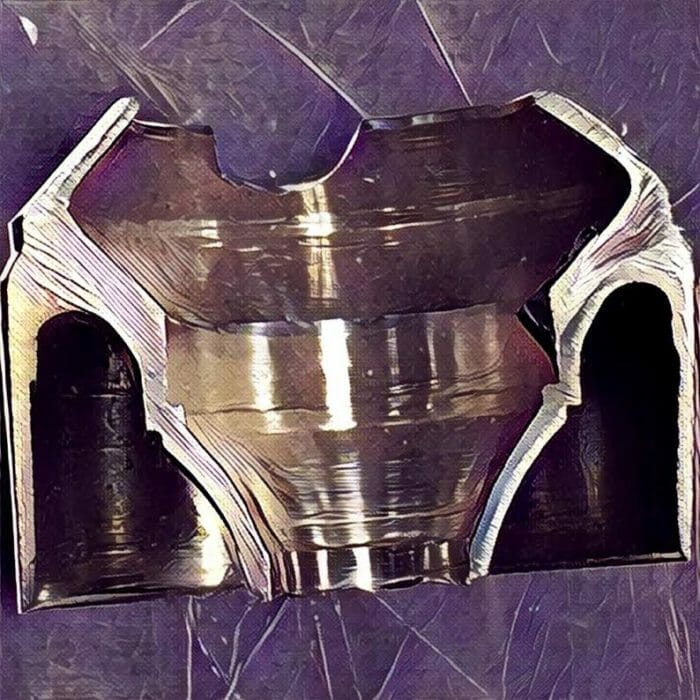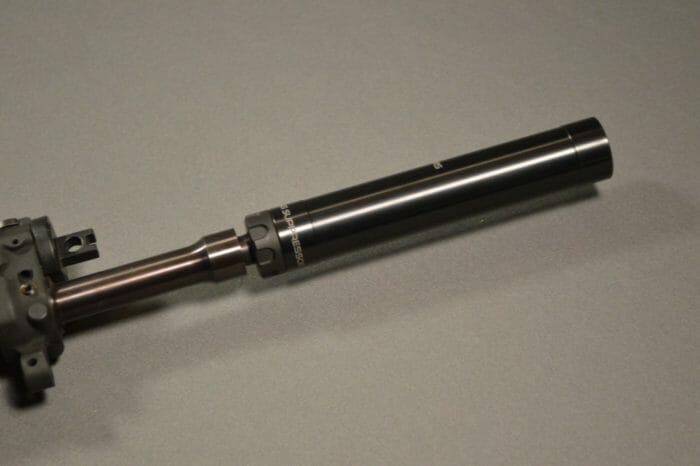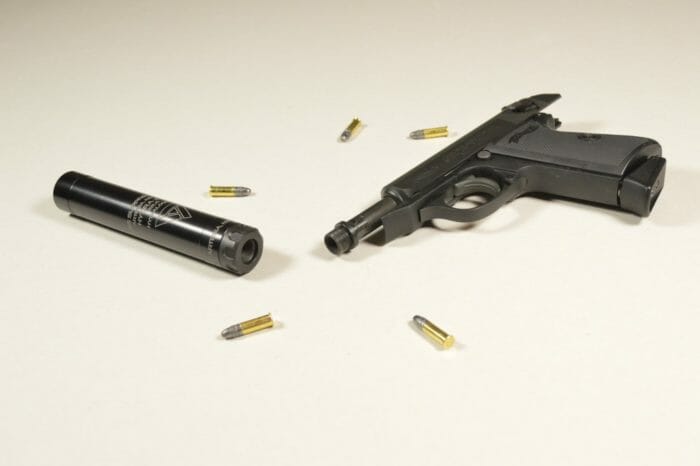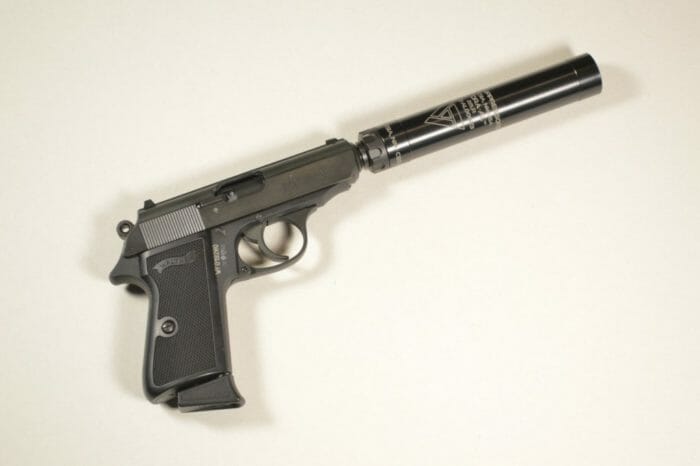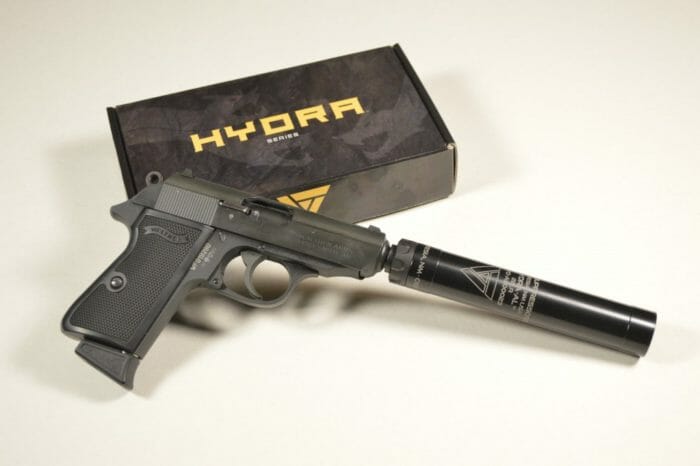Silencer Shop Authority: CGS Hydra-AL Review
Since September of last year, I’ve reviewed a lot of suppressors. I’ve looked at several pistol cans and a bunch of rifle suppressors. I’ve also spent time with some great rimfire silencers. Still, I frequently run into silencers that are quieter than I expected, sound better than I believed possible, or are lighter than I anticipated. Just when I think I’ve “heard it all” (pun intended), something comes along to reset my perspective.
The above is especially true right now. Thanks to the crescendo of silencer popularity among shooters, the suppressor market has opened itself widely to a variety of new manufacturers. Large and small companies are throwing their hats into the ever-growing ring, and some of these newcomers bring fresh concepts and designs with them.
Chaos Gear Supply (CGS) is one of these brands. CGS first entered the silencer fray earlier this year with their Hydra line of aluminum and titanium/stainless .22 suppressors. They’ve been working on expanding their reach into centerfire calibers as well. Still, as of writing, the Hydra-AL (aluminum) and Hydra-SS (17-4 stainless and titanium) are their only commercially available models (a pistol silencer, the Kraken, is just around the corner). Early feedback for the Hydras has been positive, even from people with extensive suppressor experience, and rather than simply copy an existing design, and CGS has devised a unique baffle system that they’ve dubbed Orion. A few weeks ago, I hit up the folks at Silencer Shop to schedule time with the Hydra-AL, and I’m ready to share some thoughts.
Size & Weight
Since it’s almost entirely aluminum, the Hydra-AL is incredibly light. Without going back and checking, I think that at 3.6 ounces it is probably the second lightest can I have ever reviewed (behind the 2.5 ounce Gemtech GM-22). I barely even noticed the Hydra on my PPK/S .22 and on my SIG 522 it really did feel as if it wasn’t there.
Materials & Design
The reason the Hydra-AL is so light is that, as the name implies, it is made almost entirely out of aluminum. Save for the 17-4 stainless 1/2-28 thread mount, the entirety of the silencer is either 6061 T6 or 7075 T6 aluminum with the former making up the tube and the latter the baffles. Some “aluminum” suppressors come with stainless blast baffles for increased durability and compatibility with a broader range of calibers (see the AAC Aviator 2). The Hydra-AL’s guts are entirely aluminum, so shooters will want to avoid anything more powerful than .22 LR. The hard coat anodizing on all of the aluminum parts gives them a deep black color that sets the Hydra-AL apart from its titanium/stainless brother, the Hydra-SS.
Some will complain that extensive use of aluminum in the Hydra-AL limits cleaning options. That’s a valid concern, but the can’s shielded baffles should help to limit the extent of necessary cleaning. Regardless, keep your Hoppes #9, ultrasonic, or other ammonia-based cleaners away from this silencer.
Taking the can apart for servicing is as straightforward as most other rimfire silencers. Using the included tool, unscrew the front cap and dump the 10-baffle stack out the front of the tube. The thread adapter is also removable by hand if you would like to strip it down further.
CGS has come up with an intriguing baffle design for the Hydra series. They call them Orion baffles and they’re quite unique. I’ve already mentioned the shielding skirt that isolates each member of the stack from the suppressor’s tube for easier disassembly and cleaning. A tapered surface at the edge of each baffle’s skirt helps to create an airtight seal protecting against tube fouling. It works very well.
The Orion blast face is conical and ported, much like other rimfire and centerfire silencers. However, the backside of each baffle is quite a bit different than others I have seen because it incorporates another ported, conical aperture, but this one faces forward. The conical backside of each baffle mates with a flat on the blast cone of the next, which forms a coaxial expansion chamber around between each baffle. Once gas flows into this space, its trip out is very difficult as it must first reverse its forward path and then must squeeze through the small port leading into the chamber. For sake of comparison, typical cone or M-baffles form only a single chamber between each member, and they do little to impede the rearward gas movement. The Orion captures the efficiency of conical designs, but it also bests K-baffles when it comes to trapping gasses at the perimeter of the core and impeding blowback.
Finally, if you plan to use the Hydra with a .22 rifle, make sure you have a thread spacer handy. The threads are meant to index against the barrel’s shoulder, but most rifles have longer 1/2-28 threads than pistols. If you don’t use a spacer, you’ll end up snugging the silencer’s blast baffle against the muzzle of your rifle. That’s bad for performance and even worse, it can lead to baffle and endcap strikes.
Range Report
To date, and based entirely on sound quality, the AAC Aviator 2 has held firm as my favorite .22 suppressor of those that I’ve tested. With that said, the Hydra-AL may have unseated AAC’s featherweight. Generally, rimfire suppressors are remarkably efficient, and all are pretty quiet. However, at lower sound pressure levels (SPL), differences in performance and tonal quality are far more noticeable, and since I can comfortably use them without additional ear protection, I’m able to be far pickier.
It is because of the above that some silencers in this category have surprised me. Cans that meter very well sometimes generate sharp, unpleasant tone. On the flip side, silencers that underperform when metered often sound better than ones that are technically quieter. As far as I can tell and without any official test data, the Hydra-AL is both an excellent performer and one of the top tonal choices I’ve sampled. In fact, I would say it was the best overall .22 silencer I’ve tried yet.
Paired with CCI’s standard velocity ammunition, shooting with the Hydra-AL was supremely fun. I could have used the can all day without ear muffs or plugs as bullet impacts 25 yards away were louder than the muzzle report on either my SIG 522 or my PPK/S. Don’t let CGS’s relative youth in the suppressor market confuse you, they know how to make a high-performance silencer.
The can also helped to make my rimfire Walther slightly more reliable. It typically works well with CCI ammunition, but is prone to occasional stoppages via short stroking. The Hydra didn’t add too much in the way of additional backpressure (no rimfire silencer does), but it generated enough to marginally increase slide speed and the pistol was nearly flawless with the suppressor mounted.
Unfortunately, I was not able to measure point of impact (POI) shift with the Hydra-AL. You probably remember that in the last section, I mentioned its need for a thread spacer when used with longer rifle threads. I not only forgot to take one to the range, but also found that without one, the barrel’s muzzle indexes against the first baffle. When I couldn’t get my Hydra-equipped SIG to group, I was unsurprised (but a little alarmed) to find that improper mounting caused rounds to rub ever so slightly against the end cap on the way out. Shortly after this discovery, I shut the combo down for the day.
Conclusion
CGS may be a new player in the silencer game, but they clearly know what they’re doing. While they could have hit the market with just another K-baffled or conical baffled can, CGS took it upon themselves to develop a wholly new design and it paid off. Among all the rimfire suppressors I’ve tested in the last year and change, none have been quieter or more tonally agreeable than the Hydra-AL. The fact that it also happens to be one of the lightest silencers I’ve reviewed puts a pretty bow on the already impressive package.
If the Hydra-AL sounds interesting, Silencer Shop will sell you one starting at around $275. They also have its beefier, stainless/titanium brother for around $380. Actual pricing may vary between Powered By Silencer Shop dealers.
An information security professional by day and gun blogger by night, Nathan started his firearms journey at 16 years old as a collector of C&R rifles. These days, you’re likely to find him shooting something a bit more modern – and usually equipped with a suppressor – but his passion for firearms with military heritage has never waned. Over the last five years, Nathan has written about a variety of firearms topics, including Second Amendment politics and gun and gear reviews. When he isn’t shooting or writing, Nathan nerds out over computers, 3D printing, and Star Wars.

